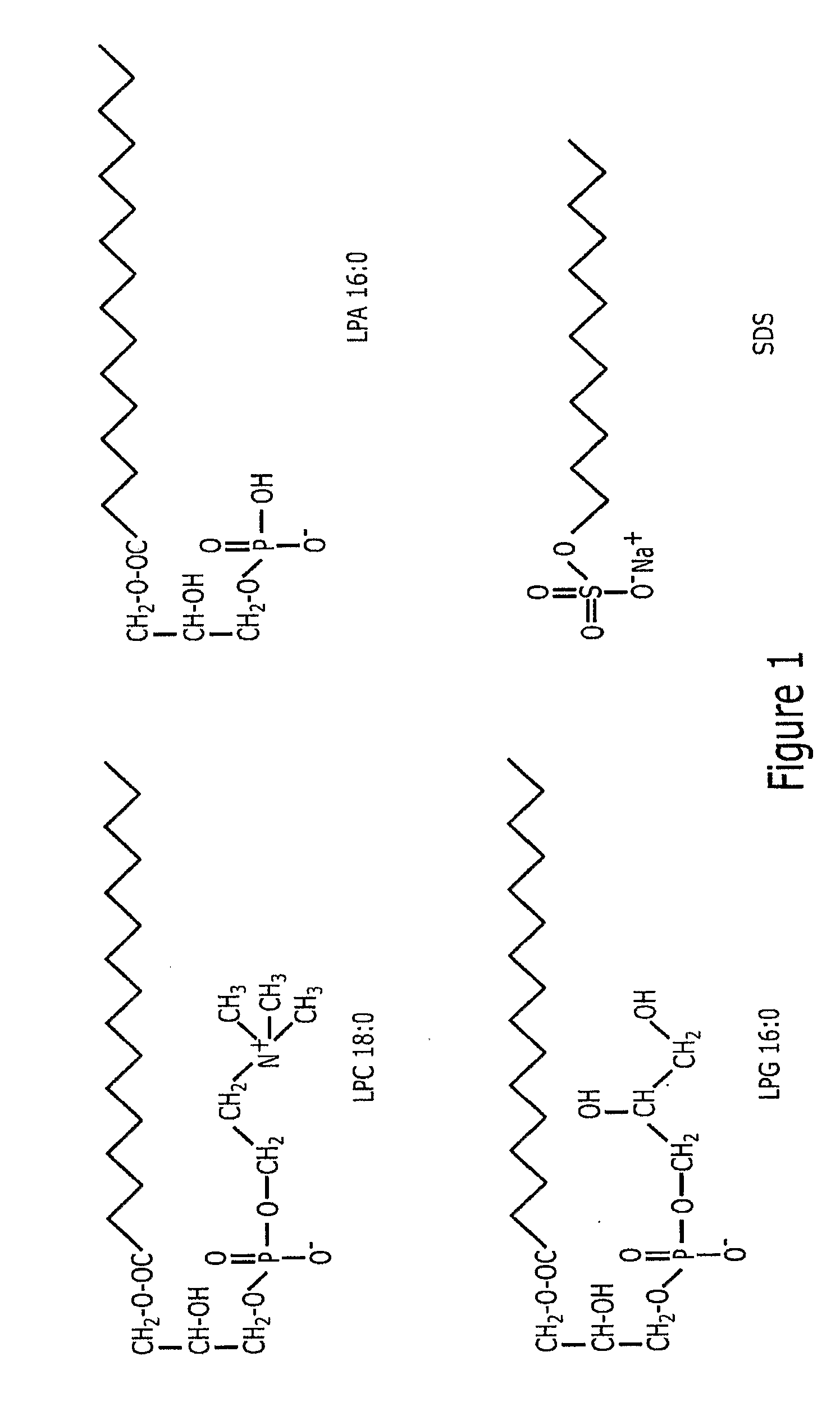Lysophospholipids Solubilized Single-Walled Carbon Nanotubes
a technology of lysophospholipids and carbon nanotubes, which is applied in the direction of capsule delivery, biochemistry apparatus and processes, and treatment, etc., can solve the problems of cytotoxicity and side effects, the tendency of carbon nanotubes to bundle, and the uncertainty of determining reaction efficiency, so as to achieve the effect of increasing the solubility of swnts
- Summary
- Abstract
- Description
- Claims
- Application Information
AI Technical Summary
Benefits of technology
Problems solved by technology
Method used
Image
Examples
example 2
[0053]Fullerene C70 was coated with gallic acid which emits green autofluorescence. The resulting C70 complexes can be used for visualizing localized nanomaterials in cells and living organisms. Following incubation of the gallic acid treated Fullerene C70, the subsequent fluorescence of a daphnid appeared to be localized in the cell membranes. While not wanting to be limited by theory, it is Applicant's belief that the use of solubilized Fullerenes will provide similar specificity for directing lysophospholipid-LPC coated materials to a cell membrane which offers advantages for certain drugs, therapeutic treatments, and investigations. Fullerene C60 has been solubilized by lysophospholipids LPC in aqueous solutions. Further, a CHO cell line is incubated with the coated Fullerene C60 at a concentration of 0.6 mg / ml and an incubation time of 4 hours. The resulting Fullerenes emit fluorescence when excited with a laser. The location of the solubilized Fullerenes can be detected within...
example 3
[0054]In accordance with this invention, it has been found that the binding pattern of lipids onto a SWNT achieves an organized structure much different from many models theorized in the literature such as the model set forth in FIG. 3D. As seen in reference to FIGS. 8A through 8C, FIGS. 8A and 8B show respective front and side views of lipids associated with a SWNT using the techniques described herein. As seen in FIG. 8A, the lipid bump I is believed formed from the gradual adsorption of lipids from a bulk supply while the lipid bump II is formed from the adsorption of a lipid cluster. The lipid head groups and tails are illustrated in respective red and cyan and the SWNT in gray. FIG. 8C is a TEM image of a SWNT-LPC assembly which displays a striation periodicity of 4.5 nm. The reference scale bar is 15 nm. The striation periodicity conforms to the predicted structures in the simulation seen in FIGS. 8A and 8B. As seen in FIGS. 8A and 8B, it is believed that the lipid tails are a...
example 4
[0055]Another useful feature of the lysophospholipid coated SWNTs is that the nanotubes, once coated, avoid the tendency to form clumps. Uncoated nanotubes or nanotubes that have significant exposed surfaces will tend to bind with other nanotubes to form large, random structures. Within living systems, the clumped or aggregated, uncoated nanotubes are believed to interfere with normal biotic processes within a cell. For instance, there are numerous published reports directed to the toxicity of nanotubes. It is believed that many of the toxicity studies are not related to inherent toxicity of the nanotubes per se, but rather reflect deleterious effects when nanotubes are aggregated into large clumps. In such aggregates, clumps can interfere with normal cellular processes including interfering with cytoskeleton assisted functions such as mytosis or myosis. Large aggregations of nanotubes can also interfere with intracellular transport of materials. In addition, at a tissue and / or an o...
PUM
 Login to View More
Login to View More Abstract
Description
Claims
Application Information
 Login to View More
Login to View More - R&D
- Intellectual Property
- Life Sciences
- Materials
- Tech Scout
- Unparalleled Data Quality
- Higher Quality Content
- 60% Fewer Hallucinations
Browse by: Latest US Patents, China's latest patents, Technical Efficacy Thesaurus, Application Domain, Technology Topic, Popular Technical Reports.
© 2025 PatSnap. All rights reserved.Legal|Privacy policy|Modern Slavery Act Transparency Statement|Sitemap|About US| Contact US: help@patsnap.com



